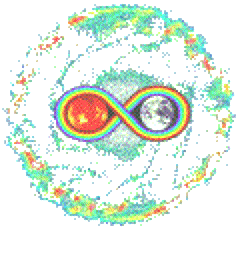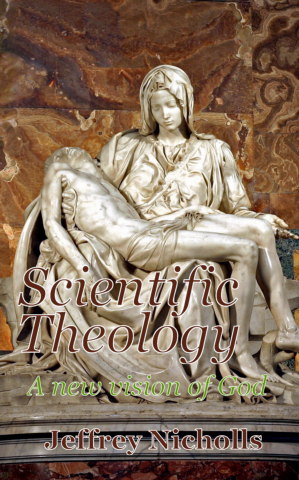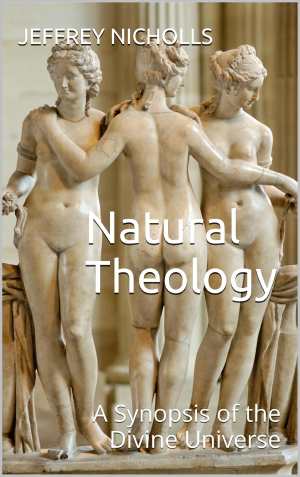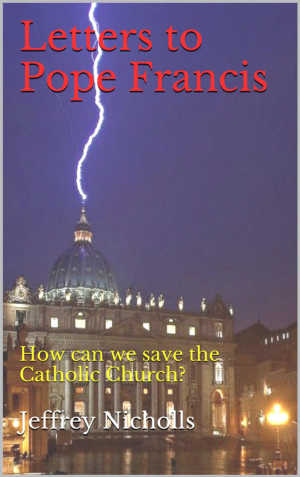Essay 32: A new singularity liberates quantum mechanics from Minkowski space
The history of many fields is marked by episodes rapid change interspersed with longer periods of stasis. This pattern was noticed by Thomas Kuhn and has attracted a lot of interest from historians of science. Thomas Kuhn (1996): The Structure of Scientific Revolutions
Perhaps the most salient feature of a revolution is that some parts of the old system must go. In the case of quantum mechanics, one of the most conspicuous casualties appeared to be determinism, but this was only partial. The timing of particular events is unpredictable, illustrated by the Born rule. Nevertheless the precise nature of the events is defined with great precision, the quantum of action, the masses of particles, the speed of light and the values of quantum states measured by energy or frequency, precisely related by the equations E = ℏ𝜔 and m = E / c 2.
The early days of quantum theory from 1900 to the early 1920s were marked by a flurry of change associated with the names of Planck, Einstein, Bohr, de Broglie, Heisenberg and Schrödinger. After the revelation of Minkowski space it seemed clear that the theory must conform to special relativity.
The first important step in this direction was taken by Paul Dirac. He began with the non-relativistic Schrödinger equation in space time which is linear in time but quadratic in momentum. Since special relativity treats space and time on an equal footing and Dirac was felt that time must be linear, he saw a need to find the square root of the momentum operator. He found a neat trick with the gamma matrices to eliminate the cross terms in this square root and arrived at the Dirac equation. He wrote:
It was found that the equation gave the particle a spin of half a quantum. And also gave it a magnetic moment. It gave just the properties that one needed for an electron. That was really an unexpected bonus for me, completely unexpected. : Abraham Pais (1986): Inward Bound: Of Matter and Forces in the Physical World, page 286
Dirac’s equation also predicted the existence of antimatter, although this was not clarified until Carl Anderson discovered the positron. Carl D. Anderson (1936_12_12): Nobel Lecture: The production and properties of positrons
Dirac’s equation became a foundation of the relativistic quantum mechanics we call quantum field theory (QFT). This theory struck many difficulties. The principle problem arise from the assumption that spacetime is a continuous manifold. This problem was solved with renormalization and by the 1970s QFT had entered the mainstream of physical theory as a comprehensive description of the fundamental particles kThe Mind of God: Science and the Search for Ultimate Meaningnown as the Standard Model. Standard model - Wikipedia
Although many physicists are very proud of this achievement and some feel that they are approaching the mind of God, the some philosophers and other critics are not so sure. Paul Davies (1992): The Mind of God: Science and the Search for Ultimate Meaning
After an extensive analysis of QFT the philosopher Meinard Kuhlmann wrote:
In conclusion one has to recall that one reason why the ontological interpretation of QFT is so difficult is the fact that it is exceptionally unclear which parts of the formalism should be taken to represent anything physical in the first place. And it looks as if that problem will persist for quite some time. Meinard Kuhlmann (Stanford Encyclopedia of Philosophy): Quantum Field Theory
Although QFT is an effective algorithm for working with the electromagnetic, weak and strong forces, gravitation is unrenormalizable so QFT fails.
Despite this we now have classical interferometers to detect and measure the gravitational waves caused by cosmic events, a new window into the dynamics of the universe.
I have noted that intellectual revolutions often require old beliefs to be abandoned. Since is birth 125 years ago, one of the principal difficulties with the interpretation of quantum theory has been to break free of Minkowski space.
In their book on axiomatic QFT, Streater and Wightman write:
Since in quantum mechanics observables are represented by hermitian operators which act on the Hilbert space of state vectors, one expects the analogue in relativistic quantum mechanics of a classical observable field to be a set of hermitian operators defined for each point of space-time and having a well-defined transformation law under the appropriate group. Streater & Wightman (2000): PCT, Spin, Statistics and All That
In other words, we are building QFT on top of Minkowski space which as Einstein points out in at the end of his 1915 paper, is also assumed to be the foundation of gravitation:
However, the postulate of general relativity cannot reveal to us anything new and different about the essence of the various processes in nature than what the special theory of relativity taught us already. Albert Einstein (1915): The Field Equations of Gravitation
We notice that Minkowski space is pixellated by the quantum of action: ∆x . ∆p ≈ ∆E . ∆t ≈ ℏ.
Perhaps we have got the cart before by horse. Maybe Minkowski space is not the foundation of quantum mechanics, but a consequence.
I approach this problem from a theological direction, seeking to explore the hypothesis that the universe creates itself, an idea implicit in the hypothesis of an eternal omnipotent initial singularity. I am far from understanding the computational details of QFT but I am heartened by the words of Richard Feynman: physical understanding is completely unmathematical, imprecise, an inexact thing but absolutely necessary to a physicist; and Peter Osper: Research is to see what everybody has seen and think what nobody has thought. Feynman, Leighton and Sands FLP II_02: Chapter 2: Differential Calculus of Vector Fields, Peter Osper (1957): Review: Albert Szent-Györgyi (1957): Bioenergetics
In his Metaphysics written more than 2000 years ago Aristotle conceived an unmoved mover, an intellectual entity whose action is thought (Aristotle’s word energeia) activate the formal universe of his mentor Plato 11 . The medieval Christian theologian Thomas Aquinas and his contemporaries transformed Aristotle’s work into a model of the Christian God.
In the Aquinas model, the creator is eternal, omnipotent, omniscient and absolutely simple. The attributes of omniscience and absolute simplicity are connected by the ancient belief that intelligence is an immaterial power, so that the maximally intelligent being must also be maximally immaterial. On the modern world, we see, with Landauer that information is physical, represented by physical symbols like these letters. Rolf Landauer (1999): Information is a Physical Entity
Let us imagine an initial singularity, naked gravitation, analogous to the creator modelled by Aquinas. This entity is the substance of gravitation deprived of energy and the Minkowski space upon which Einstein built his field theory.
It is also deprived of the formal structure of omniscience postulated by Aquinas (since it has no physical structure to represent information). It is consistent with the hypothesis that the total energy of the universe is zero. It is eternal (because nothing comes from nothing), and omnipotent, constrained only by the fact that inconsistent states cannot coexist. Zero-energy universe - Wikipedia
Further it fulfils the hypotheses of fixed point theory and acts at random since it has no structural control. These conditions enable it to create a random Hilbert space within itself, the creative feature of evolution, variation. Brouwer fixed point theorem - Wikipedia
Quantum mechanics arises spontaneously as this random structure maps itself onto itself by superposition. We can imagine the emergence of stationary features in this wave field created by hermitian operators which correspond to the elementary particles we observe in the current universe.
We can further imagine that these stationary structures induce the bifurcation of naked gravitation into potential and kinetic energy. As in QFT the kinetic energy causes the instances of stationary quantum formalism to become realized as observable particles. The potential serves to bind the systems created together.
As we observe, all the elementary particles fall into two classes, bosons and fermions. The properties of these particles may be seen as the sources of the Minkowski metric and their distinctions account for its pixellation. Minkowski spade accommodates massless bosons with null geodesics and provides a three dimensional euclidean space which enables them massive fermions subject to the exclusion principle to move freely.
This simple model frees quantum mechanics from the constraints of special relativity and provides a role for gravitation in the creation of the Universe. We know, from the modern conception of quantum mechanics as a theory of computation and communication, that it is well within its power, given a suitable evolutionary process, to create all the physical features of the Universe. Nielsen & Chuang (2016): Quantum Computation and Quantum Information
I elaborate on this proposal in my forthcoming book on the relationship between physics and theology. Jeffrey Nicholls (2025): Cognitive Cosmogenesis: A systematic integration of Physics and Theology



